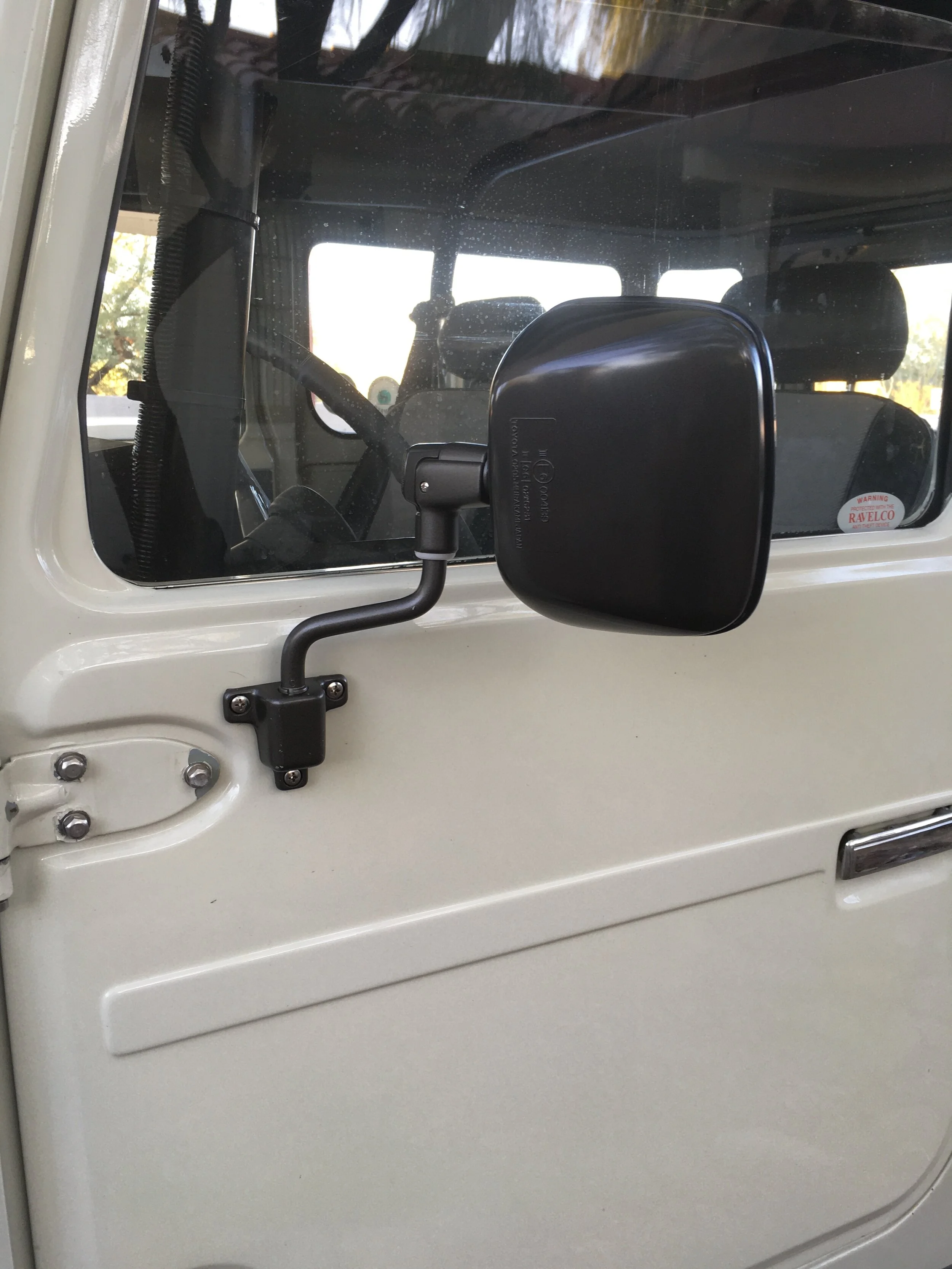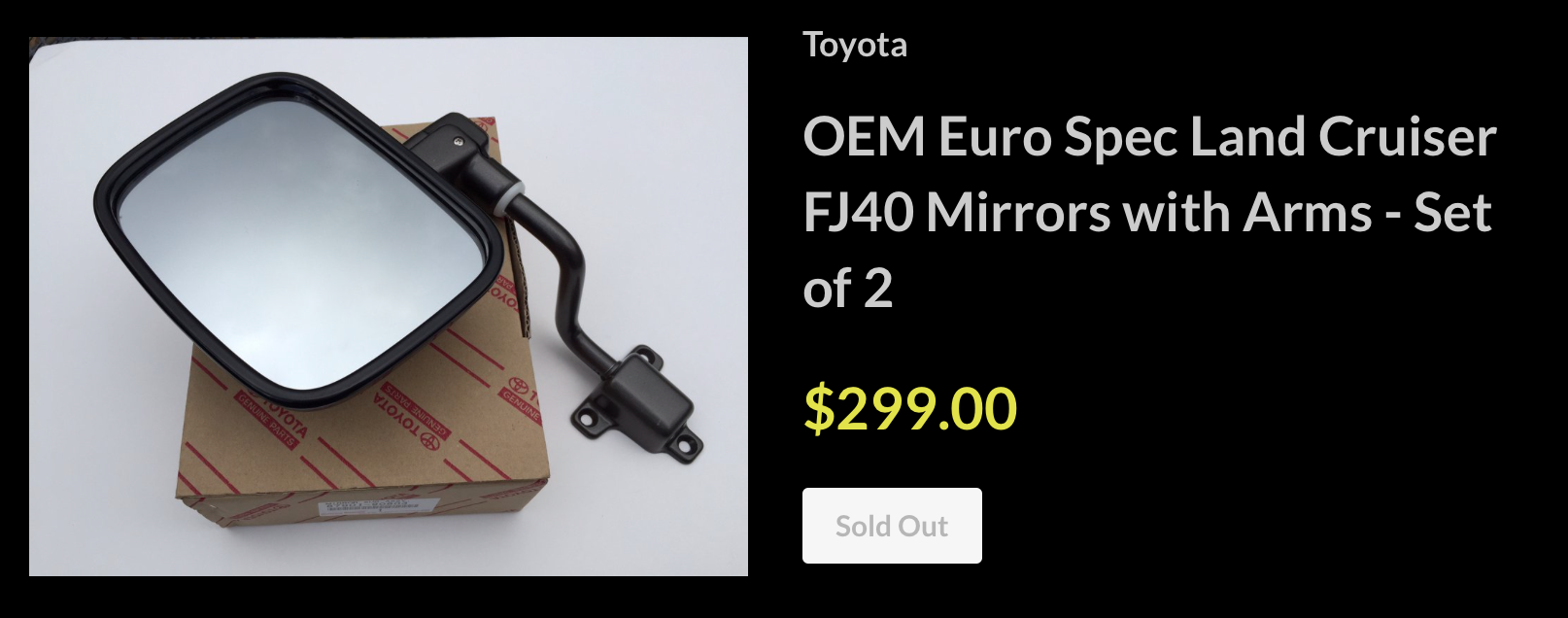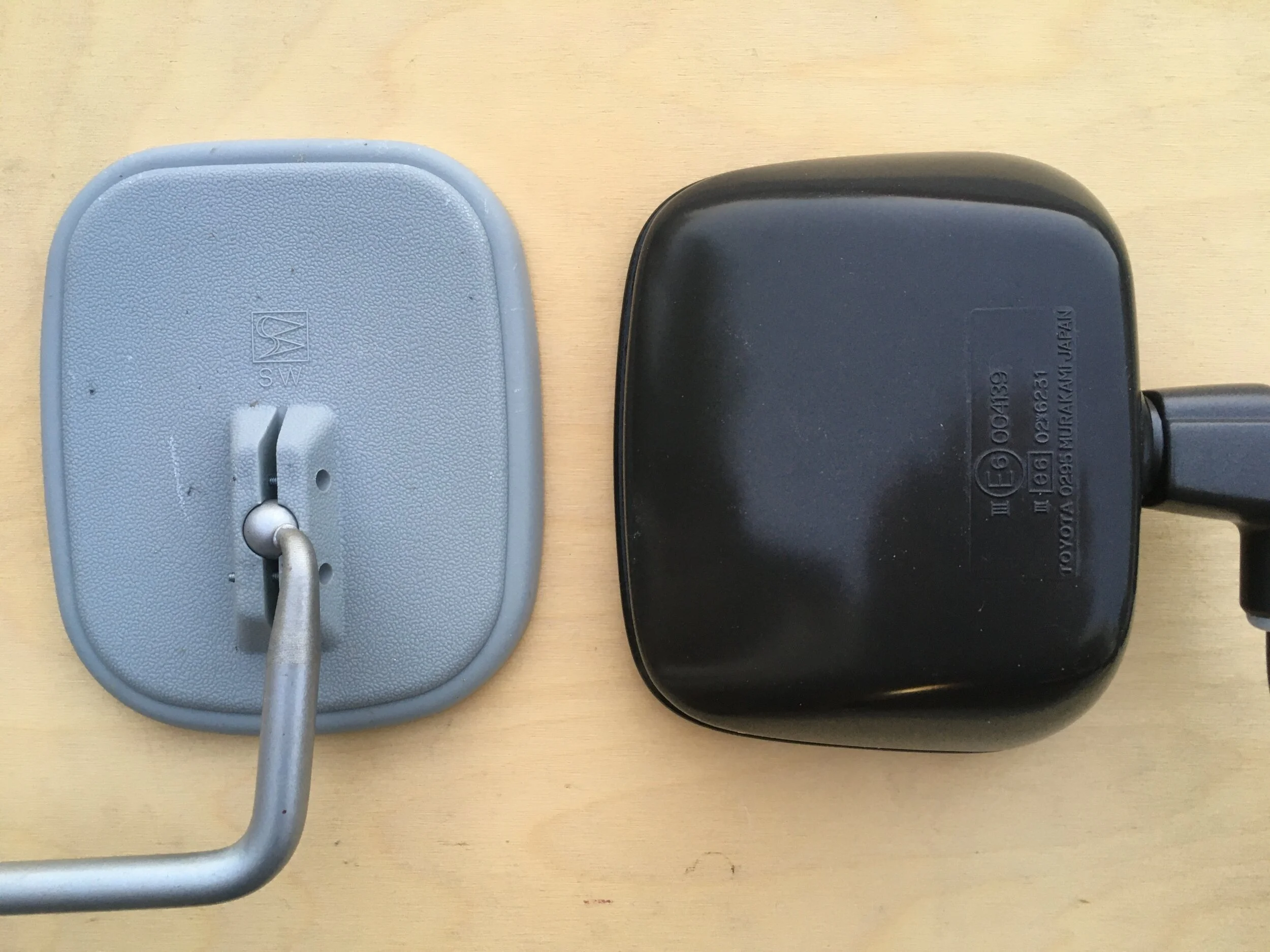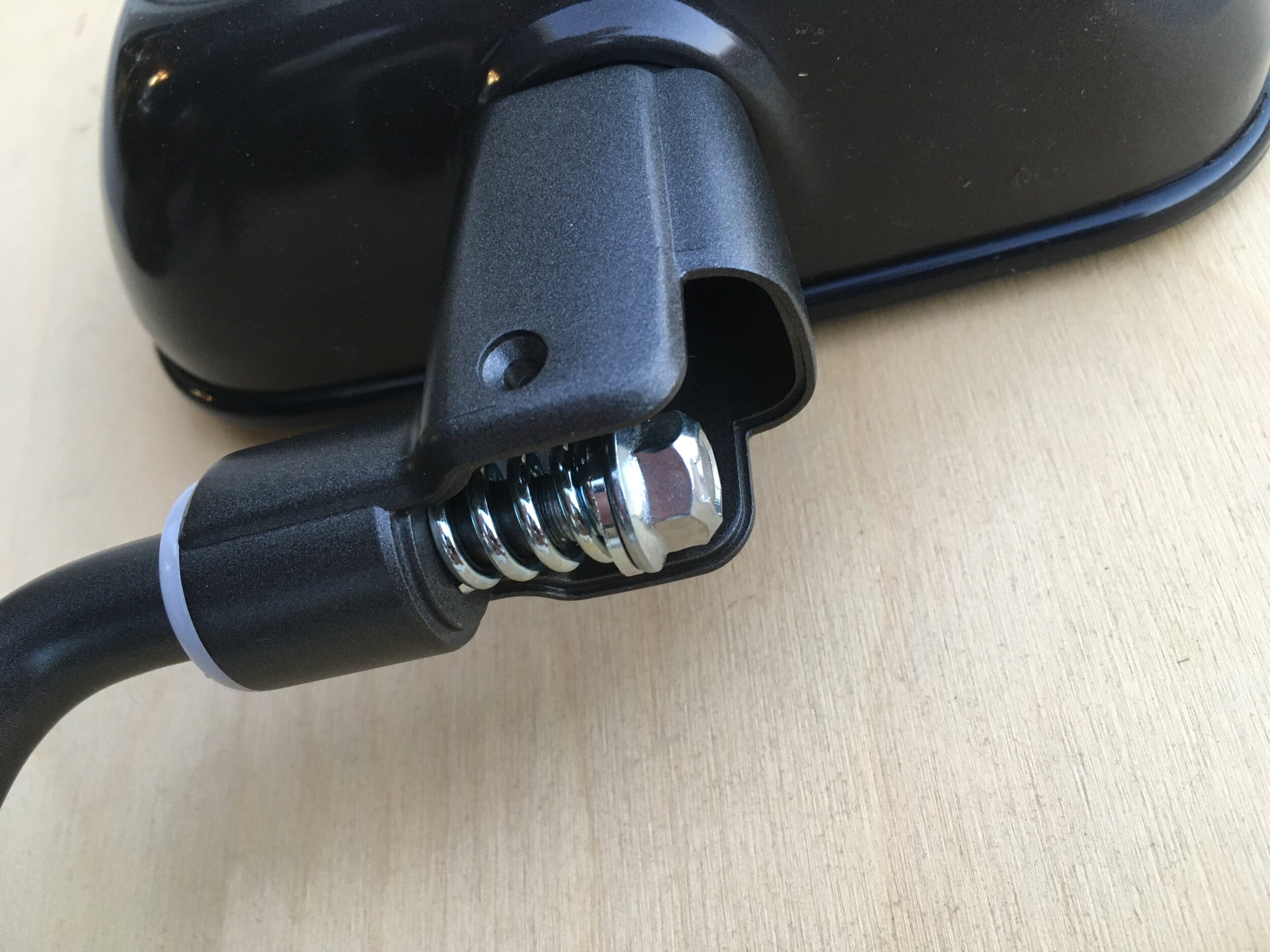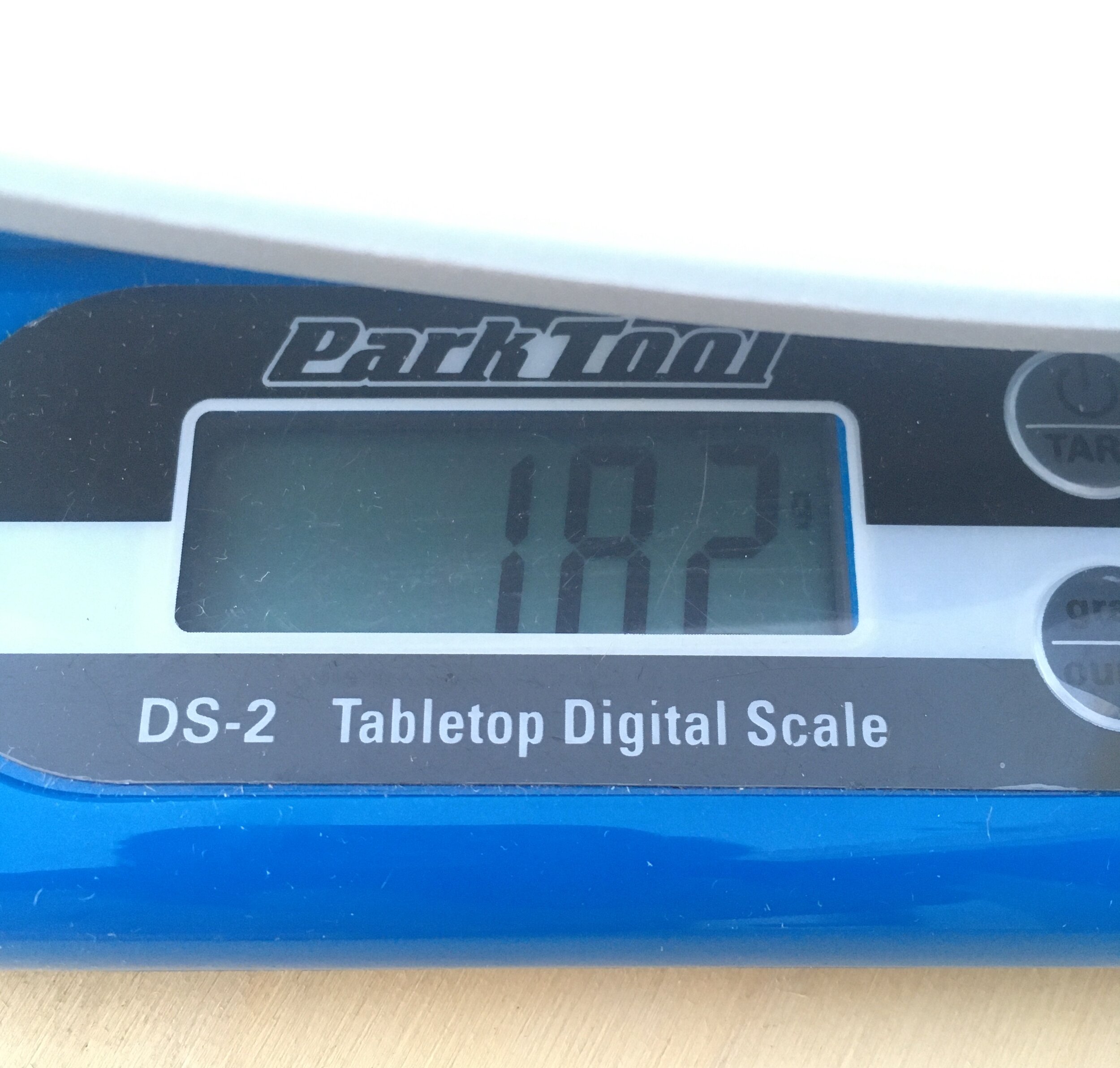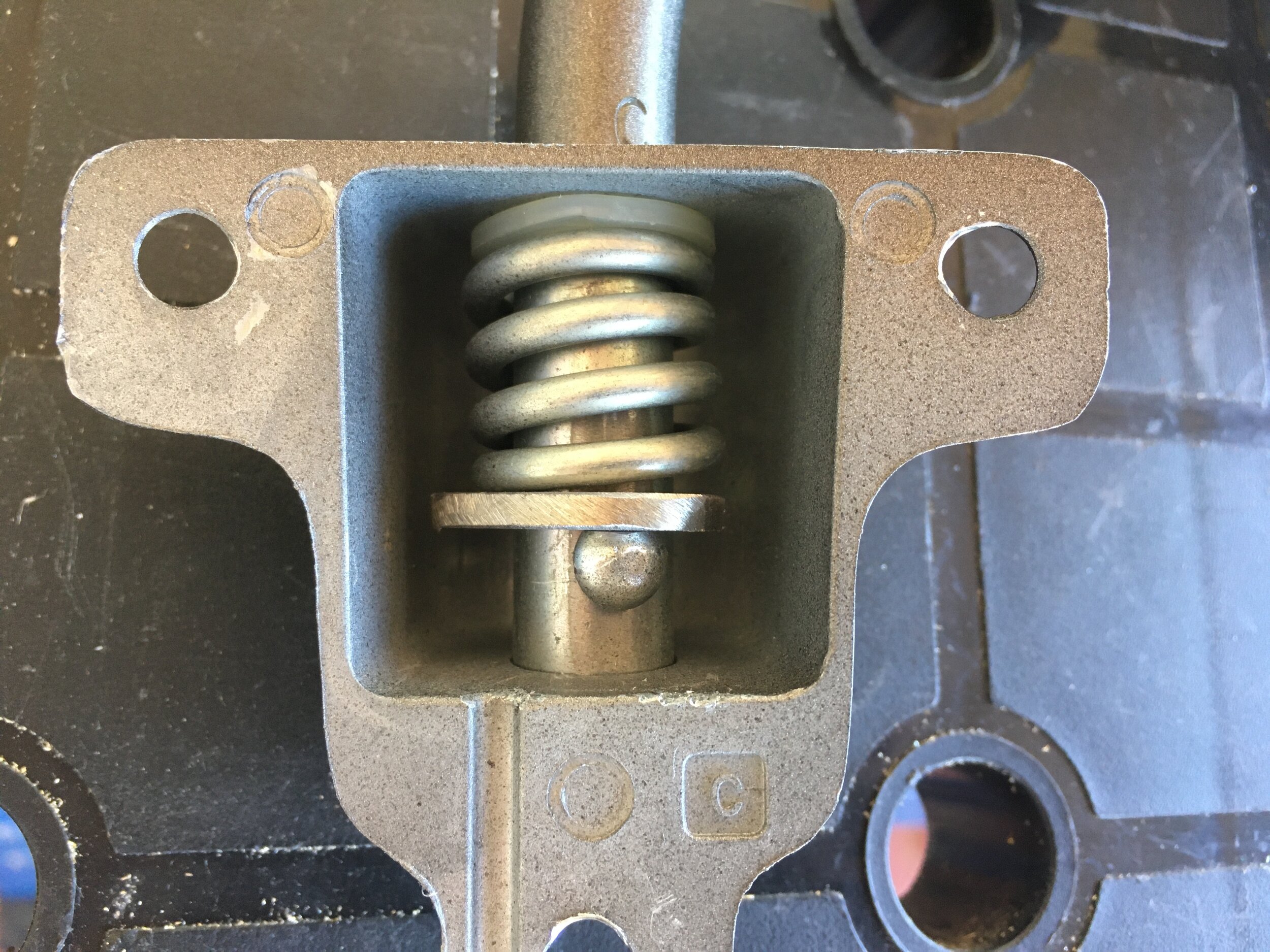Didn’t I do this not long ago? Yes: See here.
After swapping out what felt like a half dozen varieties of rear-view mirrors on my FJ40—from the original 1973-vintage high-quality but too-small round ones, to windscreen-hinge-mounted units blocked by the roll cage, back to a door-hinge-mounted rectangular model with a field of view tall but not wide enough—I finally gritted my teeth and drilled the doors to install later-type large rectangular mirrors. No longer available from the factory, I got copies from Cool Cruisers in Texas. I was unimpressed with the cheap-looking gray plastic backing on the glass (which to be fair looked just like the factory plastic), but much happier with the positioning and field of view.
For about a week.
That was how long it took me to discover that:
The heads would not stay in position more than a few days. Tightening the microscopic pair of clamping bolts and nuts made it clear they would eventually either simply pull right through the plastic, or the nuts would chew through their microscopic hexagonal recesses and simply spin.
The distortion in the cheap glass made the view to the rear look like something in a carnival funhouse.
Sigh . . . back to square one. Have I mentioned that I place great importance on having a clear, safe view to the rear of my vehicle?
I looked around again. Gazed at the FJ Company’s glorious looking mirror set, which they install on their higher-end restorations. $1,200? Seriously? And, oh . . . no returns if you don’t like them.
Then I found the solution—almost—on the oddly named but superb Land Cruiser parts resource site City Racer: “Euro spec” 40-series Toyota factory mirrors—clearly in a different league to the “North-American spec” units. $299 a pair. Wincingly, painfully, but not hallucinogenically expensive.
And out of stock.
I did a search, and found them elsewhere. At, of course, a higher price. Just about $200 each—without electric adjustment, defrost function, turn-signal indicator LEDs, or Bluetooth connectivity. But by now I was committed.
Ordered. Installed. And wow, what a difference. I haven’t the slightest idea why Toyota installed such superior mirrors only on the European export vehicles. Regulations? Higher customer expectations in those markets?
No matter—on a first drive the new mirrors seemed to have solved all my problems. The clamping mechanism of the mirror head is a stout nut which adjusts tension on a stout spring.
The mirror head itself is two and a half times heavier than the U.S. version.
182 grams . . .
. . . versus 487.
The glass—slightly convex—was superb. I’ve never had such a clear, expansive view to the rear of the FJ40. The bonus is, the Euro mirrors actually look like they cost ten times what the aftermarket-copy U.S. versions did. I was happy . . .
Almost.
On the drive out to our desert place over the rough seven miles of dirt, I noticed the mirrors shifting very slightly, not at the head but at the base of the arm. Slamming the doors a few times confirmed that they rotated slightly under similar force. I took them off and examined the spring that tensioned the arm. Unlike the head, there was no threaded nut, just a spring and a pin to lock it in place. No way to adjust the tension. So I disassembled the unit and ground down a washer to fit over the shaft and inside the housing, squeezing the spring just an additional eighth of an inch or so. That was all it took; the mirrors are now rock solid.
Assembly with washer to compress the tension spring.
All better:
I expect this to be my last post on FJ40 mirrors for some time . . .

